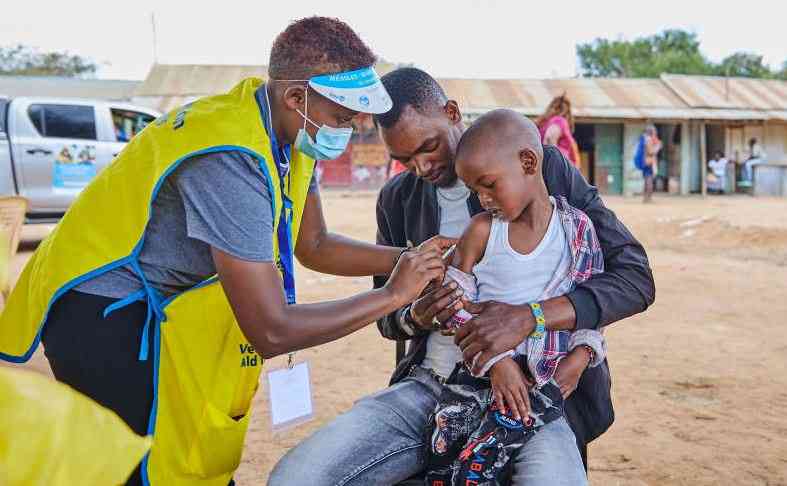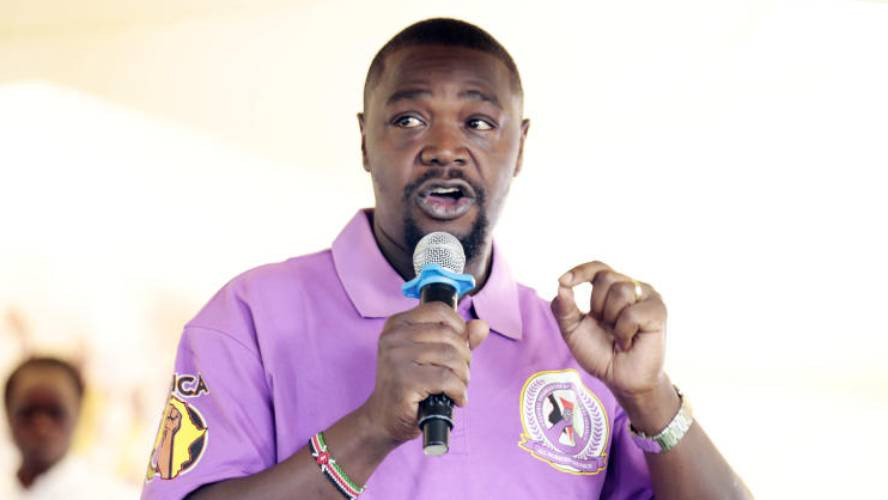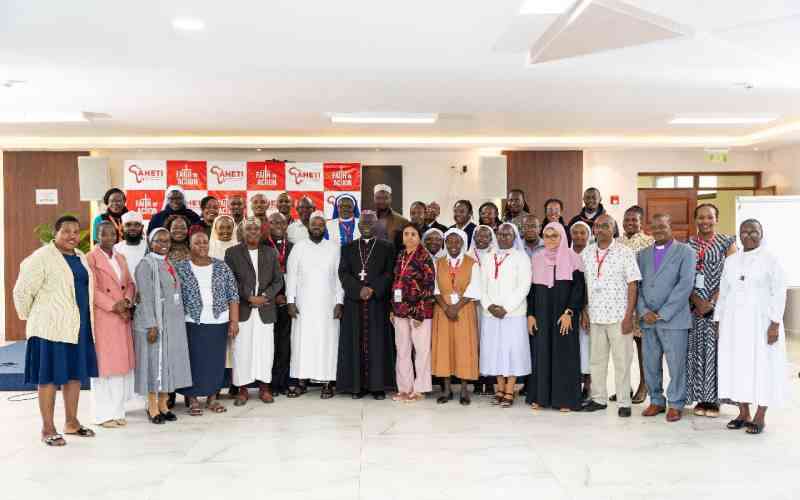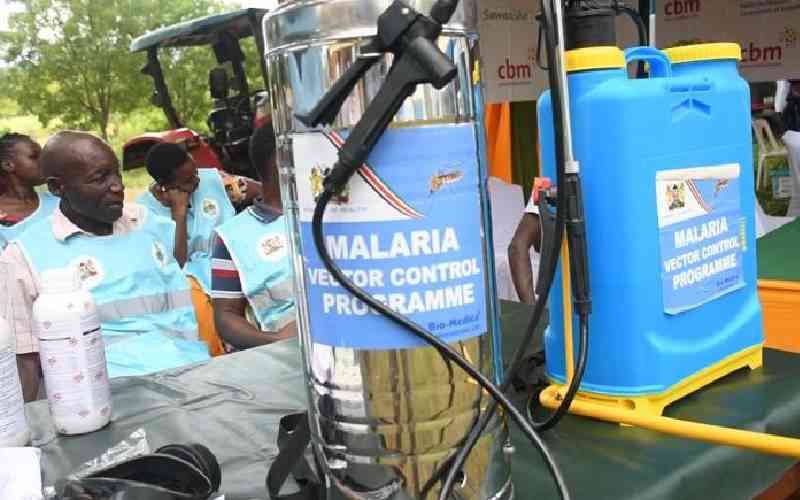
What does it mean to immunise a child, and why is it important?
Immunising a child means administering them vaccines to protect them from specific preventable diseases such as polio, measles and smallpox, to enable a child grow up healthy.
Vaccines are among the greatest advances in global health and development. For over two centuries, vaccines have safely reduced the scourge of diseases by stimulating a child’s immune system to recognize and fight off disease. Immunisation also prevent the spread of infectious diseases, reduces morbidity (sickness) and mortality rates, and contributes to herd immunity, protecting the broader population and communities, including those who cannot be vaccinated.
What are some of the diseases preventable through childhood immunisation?
Immunisation can prevent a wide range of infectious diseases, including tuberculosis, measles, mumps, rubella, polio, tetanus, diphtheria, whooping cough, Hepatitis B, Haemophilus influenzae type b (Hib), Human Papillomavirus (HPV), influenza, malaria, meningococcal meningitis, pneumococcal disease, rabies, rotavirus, and yellow fever, among others. Immunization also protects against cancers such as cervical cancer and cancer of the liver.
UNICEF has been at the forefront of addressing zero-dose children—those who have never received a single vaccine or are underimmunised and remain highly vulnerable.
According to UNICEF’s State of the World Children Report 2023, globally one in seven children are zero dose. Acording to the Kenya Demographic and Health Survey 2022, 3 per cent of children have not received their first dose of DTP vaccine.
This suggests that approximately 48,000 children every year are zero dose and most of these children live among the most marginalised communities that face multiple deprivations.
- CS says State will procure 2 million Mpox jabs, warns on false reports
- Kenya's Mpox cases rise to four
- Kenya confirms fifth Mpox case
- Vaccine alliance says world better positioned against mpox than for Covid
Keep Reading
Urgent action is needed to ensure these zero dose children and those who missed out on vaccination are reached and immunised. Reaching zero-dose children is challenging but possible through implementing tailored approaches such as targeted community level outreaches, supplementary immunization activities and community engagement.
Providing for catch-up vaccination within routine immunization service delivery through the primary health care system is also an effective strategy to reach these zero-dose children.
Kenya’s goal is to reduce the number of zero-dose children by 25 per cent by 2025, and by 50 per cent 2030. What progress has Kenya made in reducing the number of zero-dose children?
Kenya has made notable progress in reducing the number of zero-dose children through several key initiatives. These include the implementation of targeted outreach programs, mobile vaccination campaigns and community health strategies aimed at increasing awareness and access to immunization services.
The government with the support of GAVI, The Vaccine Alliance, worked on enhancing vaccine supply and logistics, enabling better coverage in underserved areas.
Additionally, global health organizations such as UNICEF and WHO supported the government on strengthening the healthcare infrastructure and training healthcare workers to reach and immunize zero-dose children.
As a result, the number of zero-dose children continues to decrease, although ongoing efforts are needed to ensure sustained progress and address remaining disparities.
According to routine information systems, half of zero dose children are found in 14 counties which include Nairobi, Mombasa, Kakamega, Kisii, Trans Nzoia, Kericho, Bomet, Uasin Gishu, Bungoma, Homa Bay, Kilifi, Kitui, Nandi and Wajir. Nairobi and Mombasa, the two largest cities in Kenya, have the highest concentration of urban informal settlements contributing to more than 60,000 zero dose children, representing about 13 per cent of all zero dose children in the country between 2019 and 2022.
At least 60 per cent of refugee children under five years arriving in Kenya from neighbouring countries like Somalia have never received any vaccination. Zero-dose children are also often born of mothers who have not been able to go to school and who are given little say in family and spending decisions.
What are the current national immunization coverage rates and trends in Kenya?
In the last decade, Kenya has consistently attained high immunization performance. Data from KDHS 2022 found that 80 per cent of children aged 12 to 23 months were fully vaccinated with the basic antigens, with 97 per cent of children having received BCG, the first dose of pentavalent, and the first dose of OPV, and 89 per cent have received the first dose of measles rubella vaccine.
However, there is a significant problem of dropouts with failure to complete vaccination schedules among many children.
Despite this sustained coverage, according to national routine information systems, one out of every 10 children in Kenya remain unvaccinated, and only two in three girls have received at least one dose of the HPV vaccine.
During the Covid-19 pandemic from 2019 to 2022, 78,000 less children were vaccinated annually with 602,000 children missing out on some life- saving routine vaccines according to national routine health information systems.
There are significant disparities in immunisation coverage across different regions and socioeconomic groups.
The persistent stagnation in immunization coverage and subnational disparities in access to and uptake of vaccines further shows the number of zero-dose and under-vaccinated children is overwhelmingly a story of inequities. Zero-dose children mostly live in challenging settings such as remote rural communities, urban slums, and communities affected by conflict (refugee populations).
How has the partnership between the government and key global health organizations, including Gavi, UNICEF, and WHO, contributed to vaccine supply and immunisation efforts over the years?
The partnership between the government and organisations like UNICEF and WHO has been instrumental in strengthening the country’s immunisation programs, providing technical support at national and counties level and focusing on key areas such as policy and advocacy, planning, logistics, training, community mobilization, public awareness, addressing vaccine hesitancy.
GAVI’s support has contributed and continues contributing to Kenya’s efforts in advancing its national immunisation plans and in improving immunisation coverage and equity in a sustainable way. GAVI’s engagement with countries is designed to provide catalytic supports along the domains of health systems strengthening, vaccines support, cold chain systems optimisation and country technical assistance.
Overall, these partnerships aim to sustain Kenya’s effort to provide equitable access to vaccines to all children, and to work towards a long-term vision of building national capacity for vaccines manufacturing and vaccines management systems.
What challenges does Kenya face in vaccination efforts, and how are global health partners addressing these challenges?
The main challenge for the vaccination program is ensuring that immunisation services are recognized and accepted by the public, and vaccines offered are of the highest quality, affordable and accessible to all Kenyans at all levels.
To enhance Kenya’s equitable immunization coverage, sustained investments are needed to ensure a stable supply system of vaccines, syringes and consumables reach all service delivery points.
We also need to enhance storage capacity for vaccines at subnational levels and address vaccine hesitancy within communities, aiming to reach the most vulnerable groups including hard to reach populations, urban slums, nomadic and pastoralist populations. Ensuring vaccine availability, accessibility and affordability is critical in addressing vaccination challenges.
It is important that communities get more involved in the planning, implementation and monitoring of immunisation services, to mitigate against these challenges.
Global health partners are helping address these challenges through supporting community engagement campaigns, strengthening supply chains, and providing training to healthcare workers.
What is your parting shot?
Continuous community engagement is essential to combat misinformation, increase acceptance and ownership of vaccines and vaccination programmes.
 The Standard Group Plc is a multi-media organization with investments in media platforms spanning newspaper print
operations, television, radio broadcasting, digital and online services. The Standard Group is recognized as a
leading multi-media house in Kenya with a key influence in matters of national and international interest.
The Standard Group Plc is a multi-media organization with investments in media platforms spanning newspaper print
operations, television, radio broadcasting, digital and online services. The Standard Group is recognized as a
leading multi-media house in Kenya with a key influence in matters of national and international interest.











